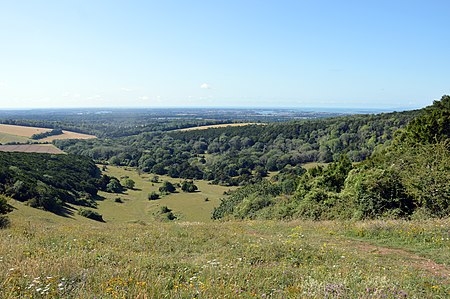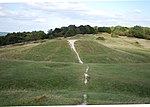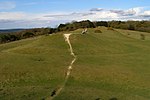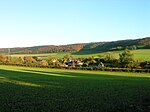Kingley Vale National Nature Reserve

Kingley Vale is a 204.4-hectare (505-acre) biological Site of Special Scientific Interest north of Chichester in West Sussex. It is also a Special Area of Conservation and a Nature Conservation Review site, Grade I. An area of 147.9 hectares (365 acres) is a national nature reserve.The site is managed by Natural England. It has an information centre and a nature trail. There is a large area of grass downland and shrubland with a number of old yew trees. From the top there are views over Sussex and the south coast. There are a number of walks and bridleways around the NNR.The main walk (known as the "Hidden Landscape Trail") focuses on the Devil's Humps, Goosehill Camp and Auxiliary units of World War II, as well as highlighting other hidden ancient features.The reserve car park is at West Stoke about five miles northwest of Chichester, and there are footpaths leading up from the village of Stoughton.
Excerpt from the Wikipedia article Kingley Vale National Nature Reserve (License: CC BY-SA 3.0, Authors, Images).Kingley Vale National Nature Reserve
The Edge, Chichester Stoughton
Geographical coordinates (GPS) Address Nearby Places Show on map
Geographical coordinates (GPS)
| Latitude | Longitude |
|---|---|
| N 50.894 ° | E -0.833 ° |
Address
The Edge
PO18 9NH Chichester, Stoughton
England, United Kingdom
Open on Google Maps











